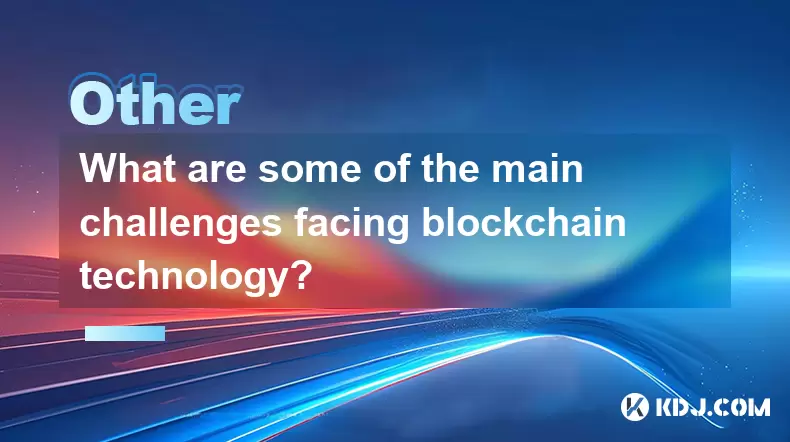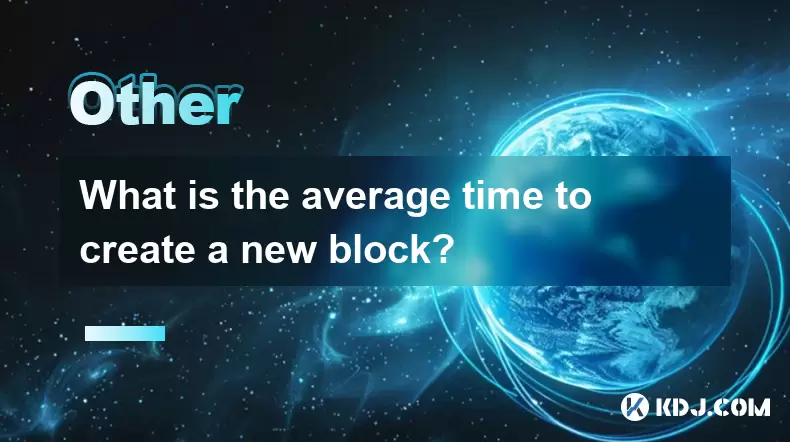-
 Bitcoin
Bitcoin $115100
1.27% -
 Ethereum
Ethereum $3675
2.71% -
 XRP
XRP $2.995
1.45% -
 Tether USDt
Tether USDt $1.000
0.02% -
 BNB
BNB $769.8
2.64% -
 Solana
Solana $168.0
3.25% -
 USDC
USDC $0.9999
-0.01% -
 TRON
TRON $0.3371
1.48% -
 Dogecoin
Dogecoin $0.2051
3.36% -
 Cardano
Cardano $0.7394
2.30% -
 Hyperliquid
Hyperliquid $38.15
0.42% -
 Stellar
Stellar $0.3966
-0.36% -
 Sui
Sui $3.486
2.93% -
 Chainlink
Chainlink $16.72
2.52% -
 Bitcoin Cash
Bitcoin Cash $568.0
4.36% -
 Hedera
Hedera $0.2440
2.59% -
 Ethena USDe
Ethena USDe $1.001
0.04% -
 Avalanche
Avalanche $22.16
2.06% -
 Litecoin
Litecoin $119.1
-0.73% -
 UNUS SED LEO
UNUS SED LEO $8.991
0.04% -
 Toncoin
Toncoin $3.232
-0.39% -
 Shiba Inu
Shiba Inu $0.00001233
2.82% -
 Uniswap
Uniswap $9.717
2.53% -
 Polkadot
Polkadot $3.664
1.85% -
 Dai
Dai $1.000
0.01% -
 Monero
Monero $281.2
-3.89% -
 Bitget Token
Bitget Token $4.350
1.55% -
 Cronos
Cronos $0.1428
5.07% -
 Pepe
Pepe $0.00001050
3.68% -
 Aave
Aave $262.3
3.54%
What are some of the main challenges facing blockchain technology?
Blockchain faces scalability, energy, interoperability, regulatory, UX, and security challenges, hindering mainstream adoption despite ongoing technical innovations.
Aug 07, 2025 at 02:58 am

Scalability Constraints in Blockchain Networks
One of the most persistent challenges in blockchain technology is scalability. As blockchain networks grow in user base and transaction volume, their ability to process transactions quickly and efficiently diminishes. For instance, Bitcoin can handle approximately 7 transactions per second (TPS), while Ethereum manages around 15–30 TPS under normal conditions. This pales in comparison to traditional payment systems like Visa, which can process over 24,000 TPS. The root of this limitation lies in the consensus mechanisms—Proof of Work (PoW) and even Proof of Stake (PoS)—which require time-consuming validation processes across decentralized nodes.
To address this, developers have explored layer-2 solutions such as the Lightning Network for Bitcoin and rollups for Ethereum. These solutions aim to offload transactions from the main chain to secondary layers, reducing congestion. However, implementation introduces complexity, potential security trade-offs, and interoperability issues. Furthermore, increasing block size or reducing block time to boost throughput can compromise decentralization and network security, as larger blocks are harder to propagate and validate across geographically dispersed nodes.
Energy Consumption and Environmental Impact
The environmental footprint of certain blockchain networks, particularly those using Proof of Work (PoW), has drawn significant criticism. Bitcoin mining, for example, relies on high-powered computational hardware solving complex cryptographic puzzles, a process that consumes vast amounts of electricity. Studies estimate that the Bitcoin network alone consumes more energy annually than some mid-sized countries.
This energy demand stems from the competitive nature of PoW, where miners race to solve puzzles, and only the winner adds a block. The rest of the computational effort is effectively wasted. While Ethereum’s transition to Proof of Stake (PoS) in 2022 drastically reduced its energy usage—by over 99%—many other blockchains still rely on energy-intensive consensus models. Even PoS systems are not entirely free of environmental concerns, as they require reliable server infrastructure and cooling systems.
Efforts to mitigate this include promoting renewable energy use in mining operations and developing more energy-efficient consensus algorithms like Proof of Authority (PoA) or Delegated Proof of Stake (DPoS). However, widespread adoption of these alternatives remains limited due to concerns about centralization and security.
Interoperability Between Blockchains
A major technical hurdle in the blockchain ecosystem is the lack of seamless communication between different networks. Each blockchain typically operates in isolation, with its own rules, consensus mechanisms, and token standards. This siloed structure makes it difficult to transfer assets or data across chains, limiting the potential for a unified decentralized ecosystem.
For example, moving ETH from Ethereum to use on the Binance Smart Chain requires a bridge, which introduces additional steps and risks. Cross-chain bridges have been targets of high-profile hacks, such as the Ronin Bridge attack in 2022, which resulted in a loss of over $600 million. These vulnerabilities arise from the complexity of verifying transactions across independent systems and the reliance on third-party validators.
Projects like Polkadot, Cosmos, and Chainlink CCIP aim to solve this by enabling interoperability through shared security models or standardized communication protocols. However, achieving true cross-chain compatibility requires broad consensus on technical standards and trust assumptions, which remains a work in progress.
Regulatory and Legal Uncertainty
Blockchain technology operates in a rapidly evolving legal landscape, with governments worldwide struggling to define and regulate its use. The decentralized nature of blockchains challenges traditional regulatory frameworks, which are designed for centralized entities. Authorities face difficulties in identifying responsible parties for illicit activities, tax compliance, and consumer protection.
In some jurisdictions, cryptocurrencies are treated as commodities, while others classify them as securities or even currencies. This inconsistency creates uncertainty for developers, investors, and users. For example, the U.S. Securities and Exchange Commission (SEC) has pursued enforcement actions against several token issuers, arguing that their tokens constitute unregistered securities. Such actions can lead to project shutdowns or forced modifications.
Moreover, anti-money laundering (AML) and know-your-customer (KYC) regulations pose compliance challenges for decentralized applications (dApps) that lack central control. While centralized exchanges can implement KYC procedures, decentralized wallets and peer-to-peer platforms cannot easily enforce them without compromising their core principles.
User Experience and Accessibility Barriers
Despite technological advancements, blockchain remains inaccessible to many due to poor user experience. Managing private keys, understanding gas fees, and navigating decentralized applications (dApps) require technical knowledge that average users may lack. Losing access to a private key means permanent loss of funds, with no recovery mechanism—a stark contrast to traditional banking systems.
Wallet setup processes often involve multiple steps, including seed phrase backups, network configuration, and token approvals. Each step carries risks: approving a malicious contract can lead to asset theft. Furthermore, transaction fees (gas fees) on networks like Ethereum can fluctuate dramatically, making small transactions economically unviable during peak times.
Developers are working on improving UX through smart contract wallets with social recovery features, gasless transactions, and simplified interfaces. However, balancing security, usability, and decentralization remains a complex challenge.
Security Vulnerabilities in Smart Contracts
Smart contracts, while powerful, are prone to bugs and exploits due to their immutable nature once deployed. A single coding error can result in irreversible financial losses. High-profile incidents, such as the DAO hack in 2016 and the Parity wallet freeze, highlight the risks of deploying untested or poorly audited code.
Common vulnerabilities include reentrancy attacks, integer overflows, and incorrect access controls. Tools like Slither and MythX help detect these issues, but they are not foolproof. Formal verification and extensive testing are essential but time-consuming and costly.
Additionally, the open-source nature of many smart contracts means attackers can study them for weaknesses before exploiting them. While bug bounty programs incentivize ethical hackers to report vulnerabilities, not all projects can afford such programs.
FAQs
Why can’t blockchains just increase block size to fix scalability?
Increasing block size allows more transactions per block, but it also makes blocks harder to propagate across the network. Larger blocks take longer to transmit, increasing the risk of orphaned blocks and reducing network efficiency. It can also favor miners or validators with high-bandwidth connections, leading to centralization.
Are all blockchains bad for the environment?
No. Blockchains using Proof of Stake (PoS) or similar energy-efficient consensus mechanisms consume significantly less energy than Proof of Work (PoW) systems. For example, Ethereum’s shift to PoS reduced its energy use to a fraction of its former level. However, PoW-based chains like Bitcoin remain energy-intensive.
How do cross-chain bridges get hacked?
Cross-chain bridges are often targeted because they hold large amounts of locked assets. Many rely on a small set of validators or centralized signing mechanisms. If attackers compromise these validators or exploit a bug in the bridge’s smart contract, they can forge messages and withdraw funds from the destination chain.
Can lost cryptocurrency ever be recovered?
Generally, no. Cryptocurrency on a blockchain is secured by cryptographic keys. If a user loses their private key or seed phrase and has no backup or recovery option, the funds are permanently inaccessible. Some advanced wallet systems offer social recovery, but this is not standard across all platforms.
Disclaimer:info@kdj.com
The information provided is not trading advice. kdj.com does not assume any responsibility for any investments made based on the information provided in this article. Cryptocurrencies are highly volatile and it is highly recommended that you invest with caution after thorough research!
If you believe that the content used on this website infringes your copyright, please contact us immediately (info@kdj.com) and we will delete it promptly.
- Avalanche vs. Ruvi AI: Daily Sales Tell a Story of Crypto Disruption
- 2025-08-07 06:29:35
- DeSoc: The Crypto to Buy Now for a Decentralized Future (and Maybe 43x Gains!)
- 2025-08-07 06:50:16
- Arctic Pablo Coin: Riding the Meme Coin Wave with a Deflationary Twist
- 2025-08-07 07:18:13
- XRP Price Skyrocket? Decoding the Cryptocurrency's Next Move
- 2025-08-07 07:31:50
- Meme Coins in August 2025: Riding the Rally Wave
- 2025-08-07 06:56:08
- Big Whales, Altcoins, and Heavy Transactions: What's Moving the Crypto Market?
- 2025-08-07 06:29:35
Related knowledge

What is the purpose of a nonce in mining?
Aug 04,2025 at 05:56pm
Understanding the Role of a Nonce in Cryptocurrency MiningIn the world of cryptocurrency mining, the term nonce stands for 'number used only once.' Th...

Can data on a blockchain be deleted?
Aug 05,2025 at 04:00am
Understanding Blockchain ImmutabilityThe core principle behind most blockchain systems is immutability, which means that once data is recorded onto th...

What is the difference between on-chain and off-chain transactions?
Aug 02,2025 at 04:22pm
Understanding On-Chain TransactionsOn-chain transactions refer to digital asset transfers that are recorded directly on a blockchain ledger. These tra...

What is the average time to create a new block?
Aug 06,2025 at 09:21pm
Understanding Block Creation in Blockchain NetworksThe average time to create a new block varies significantly depending on the specific blockchain pr...

How are blocks linked together?
Aug 04,2025 at 06:56am
Understanding the Structure of a BlockchainA blockchain is a decentralized digital ledger composed of a sequence of blocks, each containing a list of ...

What are some of the main challenges facing blockchain technology?
Aug 07,2025 at 02:58am
Scalability Constraints in Blockchain NetworksOne of the most persistent challenges in blockchain technology is scalability. As blockchain networks gr...

What is the purpose of a nonce in mining?
Aug 04,2025 at 05:56pm
Understanding the Role of a Nonce in Cryptocurrency MiningIn the world of cryptocurrency mining, the term nonce stands for 'number used only once.' Th...

Can data on a blockchain be deleted?
Aug 05,2025 at 04:00am
Understanding Blockchain ImmutabilityThe core principle behind most blockchain systems is immutability, which means that once data is recorded onto th...

What is the difference between on-chain and off-chain transactions?
Aug 02,2025 at 04:22pm
Understanding On-Chain TransactionsOn-chain transactions refer to digital asset transfers that are recorded directly on a blockchain ledger. These tra...

What is the average time to create a new block?
Aug 06,2025 at 09:21pm
Understanding Block Creation in Blockchain NetworksThe average time to create a new block varies significantly depending on the specific blockchain pr...

How are blocks linked together?
Aug 04,2025 at 06:56am
Understanding the Structure of a BlockchainA blockchain is a decentralized digital ledger composed of a sequence of blocks, each containing a list of ...

What are some of the main challenges facing blockchain technology?
Aug 07,2025 at 02:58am
Scalability Constraints in Blockchain NetworksOne of the most persistent challenges in blockchain technology is scalability. As blockchain networks gr...
See all articles

























































































